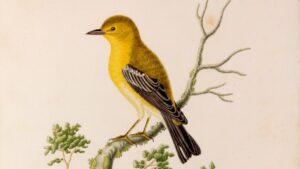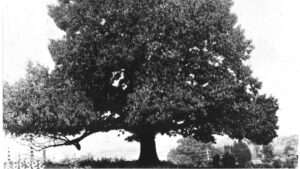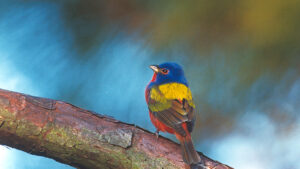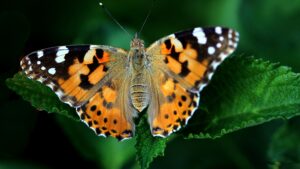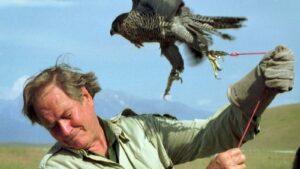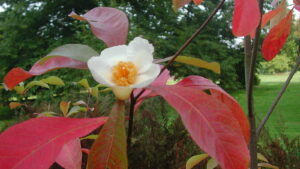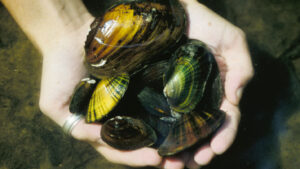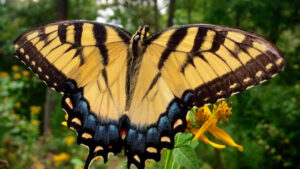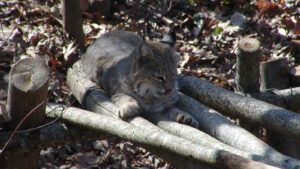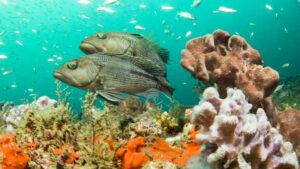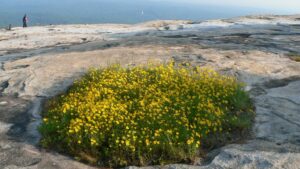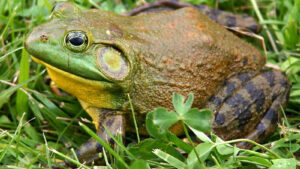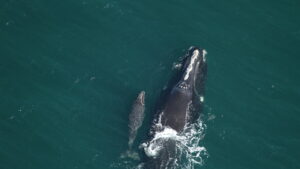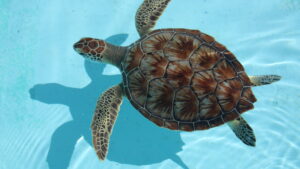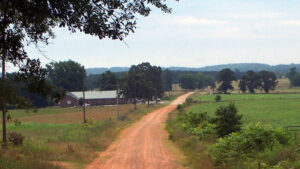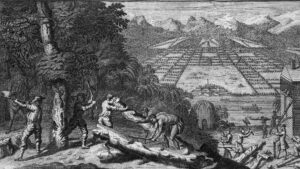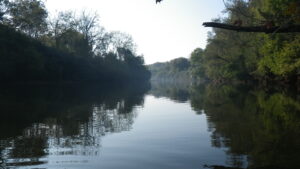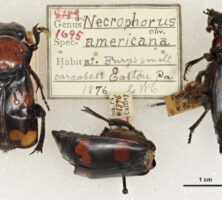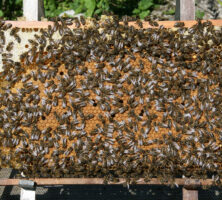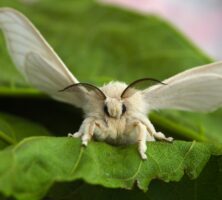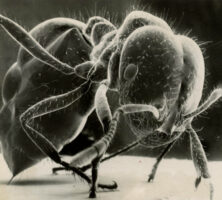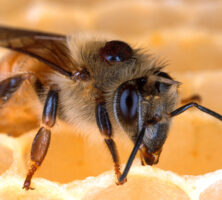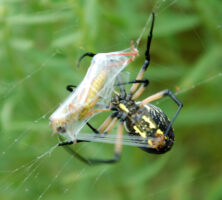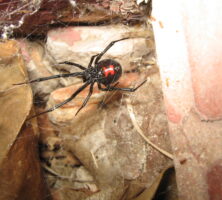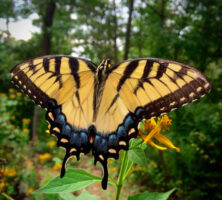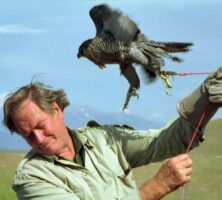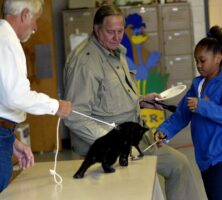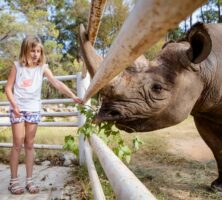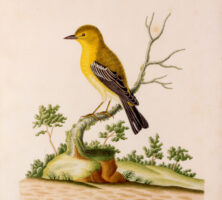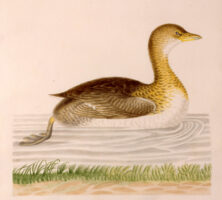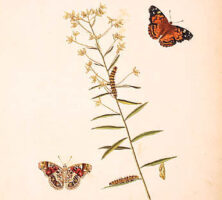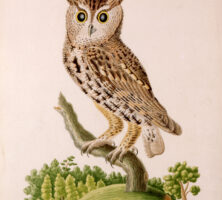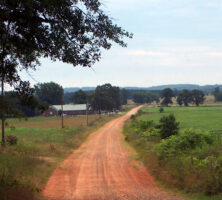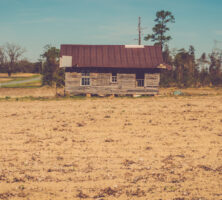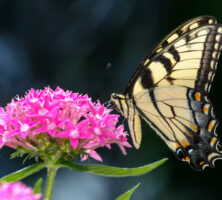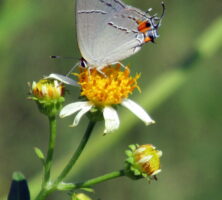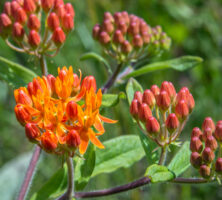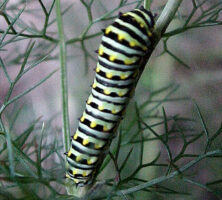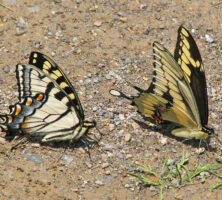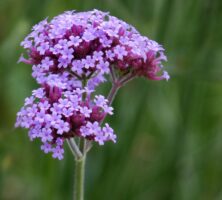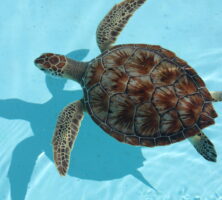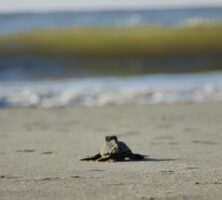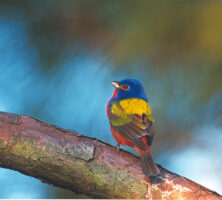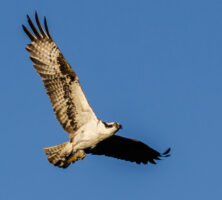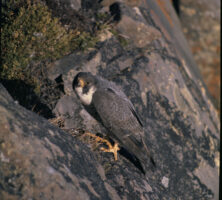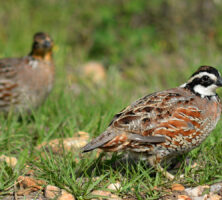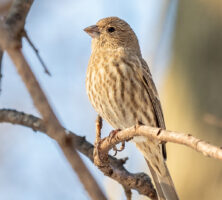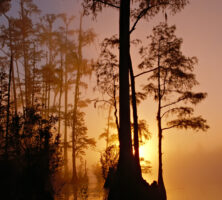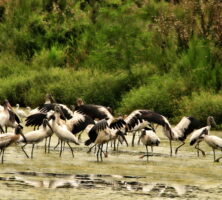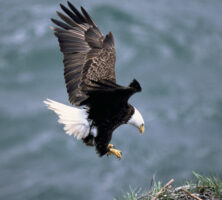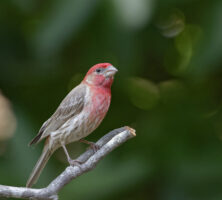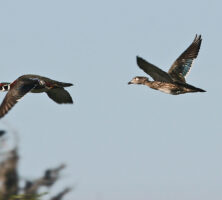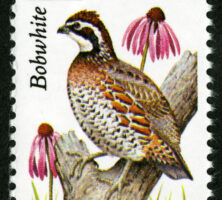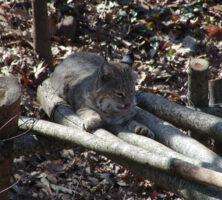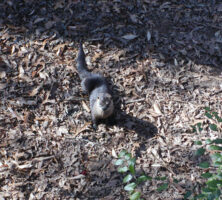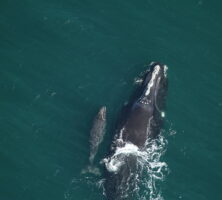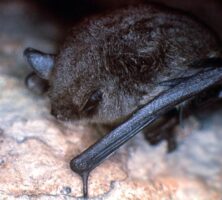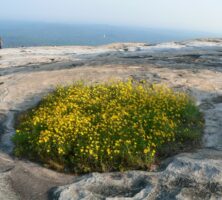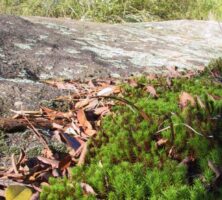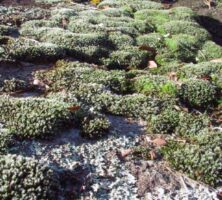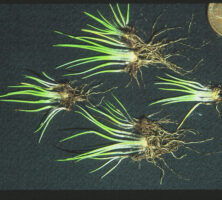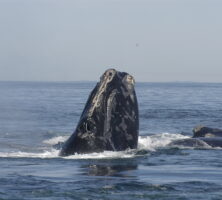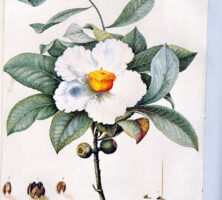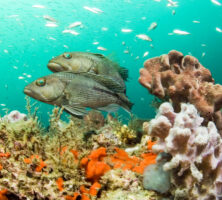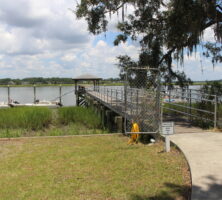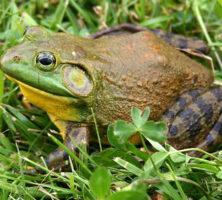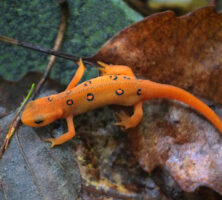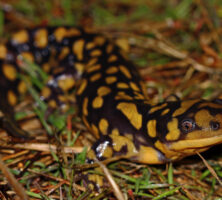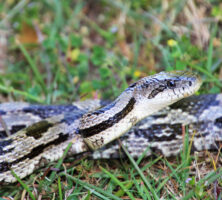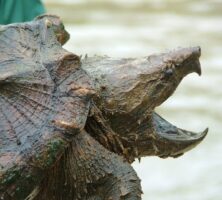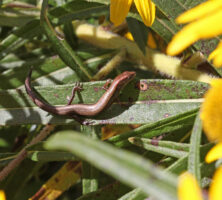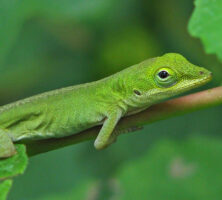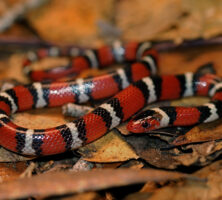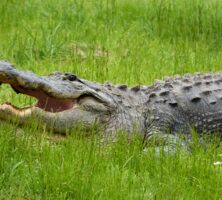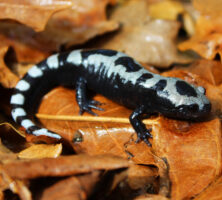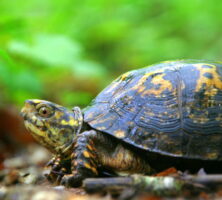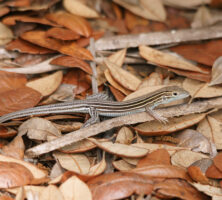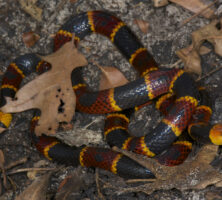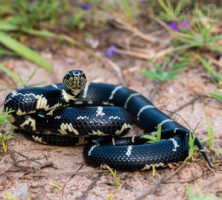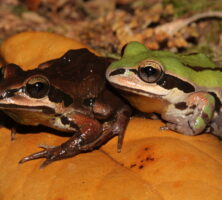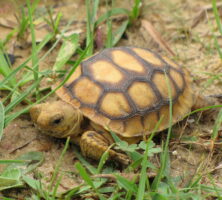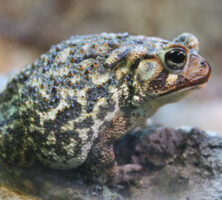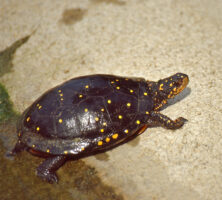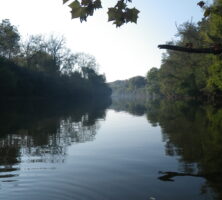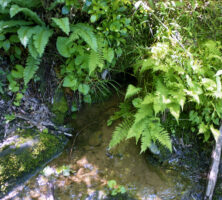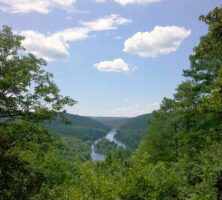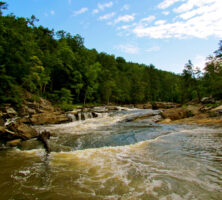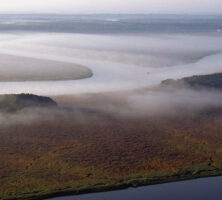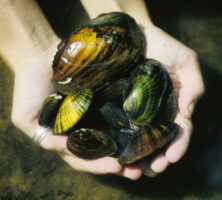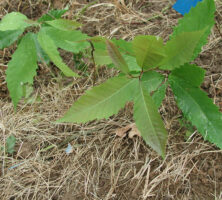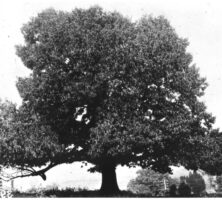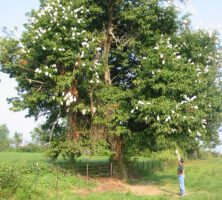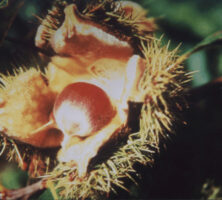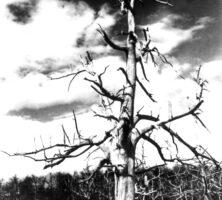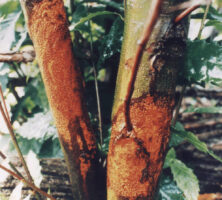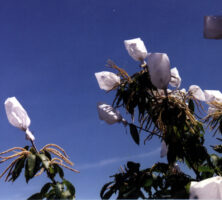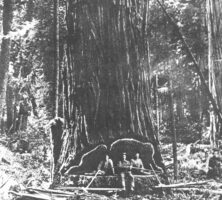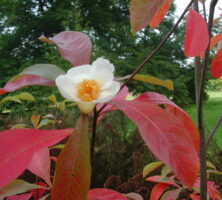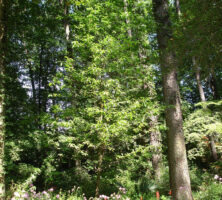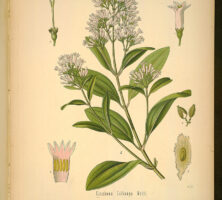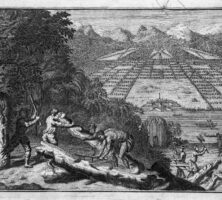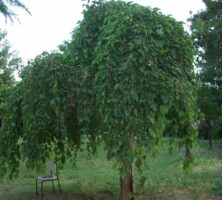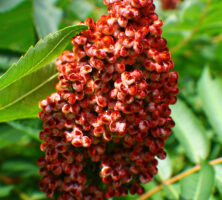The New Georgia Encyclopedia is supported by funding from A More Perfect Union, a special initiative of the National Endowment for the Humanities.
The American burying beetle, Nicrophorus americanus, is an endangered species and is no longer found in Georgia. Beetles, order Coleoptera, are the largest group of insects, and thousands of species can be found in Georgia.
Photograph by the Frost Museum
The New Georgia Encyclopedia does not hold the copyright for this media resource and can neither grant nor deny permission to republish or reproduce the image online or in print. All requests for permission to publish or reproduce the resource must be submitted to the rights holder.
European honeybees are not native to Georgia, but records show they arrived in the state by 1743. They were named the state insect in 1975. In addition to creating honey, honeybees pollinate several crops, including blueberries, apples, melons, and gourds.
Photograph by Waugsberg
The New Georgia Encyclopedia does not hold the copyright for this media resource and can neither grant nor deny permission to republish or reproduce the image online or in print. All requests for permission to publish or reproduce the resource must be submitted to the rights holder.
An adult silkmoth, Bombyx mori. This species's caterpillar, the mulberry silkworm, has produced silk textiles for millennia. Eighteenth-century Georgia colonists tried and failed to establish a silk industry in Savannah.
Photograph by Nikita
The New Georgia Encyclopedia does not hold the copyright for this media resource and can neither grant nor deny permission to republish or reproduce the image online or in print. All requests for permission to publish or reproduce the resource must be submitted to the rights holder.
Solenopsis invicta are an invasive ant species from South America. The species has interbred with native ants to create hybrid ant species that threaten soybean production. All ants are eusocial, which means they live in strict social hiearchies.
Courtesy of Atlanta Journal-Constitution.
The New Georgia Encyclopedia does not hold the copyright for this media resource and can neither grant nor deny permission to republish or reproduce the image online or in print. All requests for permission to publish or reproduce the resource must be submitted to the Atlanta Journal-Constitution.
Researchers have attributed recent declines in apiary honeybee populations to parasitic varroa mites, pictured between the bee's wings above. Varroa mites suck drone and developing brood blood, weakening individuals. An untreated varroa infestation may kill colonies.
Photograph by the U.S. Department of Agriculture
The New Georgia Encyclopedia does not hold the copyright for this media resource and can neither grant nor deny permission to republish or reproduce the image online or in print. All requests for permission to publish or reproduce the resource must be submitted to the rights holder.
The golden garden spider, Argiope aurantia, is a member of the orb-web family. Here, an individual uses its spinnerets, located on its abdomen, to trap prey. Spiders are exclusively carnivorous, though the golden garden spider is no danger to humans.
Photograph by Tom McC
The New Georgia Encyclopedia does not hold the copyright for this media resource and can neither grant nor deny permission to republish or reproduce the image online or in print. All requests for permission to publish or reproduce the resource must be submitted to the rights holder.
Widow spiders produce cobwebs and seclude themselves in dark, isolated areas. They have a painful bite, which requires medical attention, but they are rarely fatal.
Photograph by Charaj
The New Georgia Encyclopedia does not hold the copyright for this media resource and can neither grant nor deny permission to republish or reproduce the image online or in print. All requests for permission to publish or reproduce the resource must be submitted to the rights holder.
The eastern tiger swallowtail, Papilo glaucus, is the state butterfly of Georgia. It's common across the eastern United States.
Courtesy of Loy Xingwen
The New Georgia Encyclopedia does not hold the copyright for this media resource and can neither grant nor deny permission to republish or reproduce the image online or in print. All requests for permission to publish or reproduce the resource must be submitted to the rights holder.
Conservationist Jim Fowler, a Georgia native, holds a peregrine falcon at the National Bison Range near Missoula, Montana, in 1998. Fowler cohosted the television series Mutual of Omaha's Wild Kingdom for more than twenty years and made frequent appearances on the Today show and on the Tonight Show Starring Johnny Carson.
Courtesy of Atlanta Journal-Constitution.
The New Georgia Encyclopedia does not hold the copyright for this media resource and can neither grant nor deny permission to republish or reproduce the image online or in print. All requests for permission to publish or reproduce the resource must be submitted to the Atlanta Journal-Constitution.
Jim Fowler (center), a conservationist and environmental educator, shows a student in Rockdale County how to feed a baby black-spotted leopard in 2003. A native of Dougherty County, Fowler was the longtime cohost of the television series Mutual of Omaha's Wild Kingdom.
Courtesy of Atlanta Journal-Constitution.
The New Georgia Encyclopedia does not hold the copyright for this media resource and can neither grant nor deny permission to republish or reproduce the image online or in print. All requests for permission to publish or reproduce the resource must be submitted to the Atlanta Journal-Constitution.
Visitors feed a rhino in the Parks at Chehaw in Albany. The zoo was designed by Dougherty County native Jim Fowler, the longtime cohost of Mutual of Omaha's Wild Kingdom. The Chehaw zoo and Zoo Atlanta are the only two accredited zoos in the state.
Courtesy of Explore Georgia, Photograph by Ralph Daniel.
The New Georgia Encyclopedia does not hold the copyright for this media resource and can neither grant nor deny permission to republish or reproduce the image online or in print. Requests for permission to publish or reproduce the resource may need to be submitted to Explore Georgia.
John Abbot painted his Yellow Breasted Finch (watercolor on paper, 11 1/8" x 8 3/4") in 1790, fifteen years after moving from Virginia to Georgia. A native of England, Abbot traveled to America in 1773 and spent the remainder of his life collecting and drawing specimens of New World birds, insects, and butterflies.
Courtesy of Morris Museum of Art
The New Georgia Encyclopedia does not hold the copyright for this media resource and can neither grant nor deny permission to republish or reproduce the image online or in print. All requests for permission to publish or reproduce the resource must be submitted to the rights holder.
Painter John Abbot's Grebe, Didapper, or Water Witch (watercolor on paper, 11 1/8" x 8 3/4") is housed at the Morris Museum of Art in Augusta.
Courtesy of Morris Museum of Art
The New Georgia Encyclopedia does not hold the copyright for this media resource and can neither grant nor deny permission to republish or reproduce the image online or in print. All requests for permission to publish or reproduce the resource must be submitted to the rights holder.
This bronze plaque depicting the naturalist and illustrator John Abbot graces a monument erected in 1957 by the Georgia Historical Society and the Georgia Historical Commission in Bulloch County. Abbot, a British native, collected and drew numerous specimens of birds, insects, butterflies, and moths during his nearly sixty-five years in Georgia.
Courtesy of Georgia Historical Society, Georgia Historical Society collection of photographs, #GHS 1361PH-24-01-4588.
The New Georgia Encyclopedia does not hold the copyright for this media resource and can neither grant nor deny permission to republish or reproduce the image online or in print. All requests for permission to publish or reproduce the resource must be submitted to Georgia Historical Society.
This watercolor of a butterfly, today identified as the American Painted Lady, is one of many images depicting butterflies and moths by John Abbot, a British collector and illustrator who lived and worked in Georgia from 1775 until around 1840.
From The Natural History of the Rarer Lepidopterous Insects of Georgia, by J. Abbot
The New Georgia Encyclopedia does not hold the copyright for this media resource and can neither grant nor deny permission to republish or reproduce the image online or in print. All requests for permission to publish or reproduce the resource must be submitted to the rights holder.
John Abbot, a painter and naturalist, created Little Horn Owl or Screech Owl (watercolor on paper, 11 1/8" x 8 3/4") in 1790. From 1775 until 1818 Abbot lived and worked in present-day Burke County, sending specimens and illustrations of New World species to collectors in his homeland of England.
Courtesy of Morris Museum of Art
The New Georgia Encyclopedia does not hold the copyright for this media resource and can neither grant nor deny permission to republish or reproduce the image online or in print. All requests for permission to publish or reproduce the resource must be submitted to the rights holder.
Eliza Frances Andrews (pictured ca. 1879) was a writer of journals, novels, newspaper reports, botany articles and textbooks, and editorials. Her published diary, War-Time Journal of a Georgia Girl, 1864-1865, is one of the most compelling first-person accounts of the Civil War home front.
Courtesy of University of Tennessee at Chattanooga Lupton Library Special Collections
The New Georgia Encyclopedia does not hold the copyright for this media resource and can neither grant nor deny permission to republish or reproduce the image online or in print. All requests for permission to publish or reproduce the resource must be submitted to the rights holder.
Image of Eliza Frances Andrews in the War-Time Journal of a Georgia Girl, 1864-1865, one of the most compelling first-person accounts of the Civil War (1861-65) home front, published in 1908. Eliza Frances Andrews was a writer, newspaper reporter, editor, columnist, social critic, scientist, and educator. By the time of her death in 1931 in Rome, Georgia, Andrews had written three novels, more than a dozen scientific articles on botany, two internationally recognized botany textbooks, and dozens of articles, commentaries, and reports on topics ranging from politics to environmental issues.
Image from The War Time Journal of a Georgia Girl (1908)
The New Georgia Encyclopedia does not hold the copyright for this media resource and can neither grant nor deny permission to republish or reproduce the image online or in print. All requests for permission to publish or reproduce the resource must be submitted to the rights holder.
A dirt road in rural Madison County showcases Georgia's famous red clay, found throughout the state's Piedmont. The clay's composition of silicon, aluminum, and iron oxides is called saprolite.
Photograph from Elizabeth Prata
The New Georgia Encyclopedia does not hold the copyright for this media resource and can neither grant nor deny permission to republish or reproduce the image online or in print. All requests for permission to publish or reproduce the resource must be submitted to the rights holder.
A bare fallow field, composed of sandy soil and clay subsoil, in Vienna, Georgia. Soil, which is composed of minerals, organic material, water, and air, is generally less than a meter in depth and forms through the weathering of the earth's surface.
Image from Lee Coursey
The New Georgia Encyclopedia does not hold the copyright for this media resource and can neither grant nor deny permission to republish or reproduce the image online or in print. All requests for permission to publish or reproduce the resource must be submitted to the rights holder.
The New Georgia Encyclopedia does not hold the copyright for this media resource and can neither grant nor deny permission to republish or reproduce the image online or in print. All requests for permission to publish or reproduce the resource must be submitted to the rights holder.
The painted lady butterfly (Vanessa cardui) is a migratory species of butterfly that spends part of its life cycle in Georgia.
Image from Vanessa Cardui
The New Georgia Encyclopedia does not hold the copyright for this media resource and can neither grant nor deny permission to republish or reproduce the image online or in print. All requests for permission to publish or reproduce the resource must be submitted to the rights holder.
The state legislature named the tiger swallowtail (Papilio glaucus) as the official butterfly of Georgia in 1988. The butterfly species is one of several hundred found in the state.
Image from Peter Miller
The New Georgia Encyclopedia does not hold the copyright for this media resource and can neither grant nor deny permission to republish or reproduce the image online or in print. All requests for permission to publish or reproduce the resource must be submitted to the rights holder.
The knobby ends of its antennae stalk, as well as the upright position of its wings, identify the grey hairstreak (Strymon melinus) as a butterfly, rather than a moth.
Image from mwms1916
The New Georgia Encyclopedia does not hold the copyright for this media resource and can neither grant nor deny permission to republish or reproduce the image online or in print. All requests for permission to publish or reproduce the resource must be submitted to the rights holder.
Butterfly weed (Asclepias tuberosa) is one of the best plants for attracting butterflies in Georgia and one of only several species eaten by caterpillars. Caterpillars feed only on the type of plant upon which they hatch, and they can eat several times their weight in food on a single day.
Image from Philip Bouchard
The New Georgia Encyclopedia does not hold the copyright for this media resource and can neither grant nor deny permission to republish or reproduce the image online or in print. All requests for permission to publish or reproduce the resource must be submitted to the rights holder.
An eastern black swallowtail caterpillar (Papilio polyxenes) feeds on a dill plant. A butterfly or moth caterpillar typically feeds for two to four weeks before beginning its metamorphosis into a butterfly by spinning a silk cocoon.
Photograph by Paul Thomas
The New Georgia Encyclopedia does not hold the copyright for this media resource and can neither grant nor deny permission to republish or reproduce the image online or in print. All requests for permission to publish or reproduce the resource must be submitted to the rights holder.
Tiger swallowtails (Papilio glaucus) sip from a stream. Georgia's state butterfly, the tiger swallowtail produces two "broods" of caterpillars each season, one in May and the other in July or August.
Image from Vicki DeLoach
The New Georgia Encyclopedia does not hold the copyright for this media resource and can neither grant nor deny permission to republish or reproduce the image online or in print. All requests for permission to publish or reproduce the resource must be submitted to the rights holder.
Upright verbena (Verbena bonairiensis) is one of the best plants for attracting butterflies in Georgia. The loss of important forage plants, often due to the use of herbicides in agriculture, poses a threat to the survival of many species of butterfly in the state.
Image from Linda De Volder
The New Georgia Encyclopedia does not hold the copyright for this media resource and can neither grant nor deny permission to republish or reproduce the image online or in print. All requests for permission to publish or reproduce the resource must be submitted to the rights holder.
The threatened loggerhead sea turtle lives in the waters off Georgia and nests on the state's beaches.
Image from Florida Fish and Wildlife
The New Georgia Encyclopedia does not hold the copyright for this media resource and can neither grant nor deny permission to republish or reproduce the image online or in print. All requests for permission to publish or reproduce the resource must be submitted to the rights holder.
The New Georgia Encyclopedia does not hold the copyright for this media resource and can neither grant nor deny permission to republish or reproduce the image online or in print. All requests for permission to publish or reproduce the resource must be submitted to the rights holder.
A sea turtle hatchling makes its way to the ocean on Blackbeard Island.
Courtesy of U.S Fish and Wildlife Service
The New Georgia Encyclopedia does not hold the copyright for this media resource and can neither grant nor deny permission to republish or reproduce the image online or in print. All requests for permission to publish or reproduce the resource must be submitted to the rights holder.
The New Georgia Encyclopedia does not hold the copyright for this media resource and can neither grant nor deny permission to republish or reproduce the image online or in print. All requests for permission to publish or reproduce the resource must be submitted to the rights holder.
As a result of changes in the landscape, the number of painted buntings (Passerina ciris), the most colorful songbirds in the state, declined by more than 50 percent in Georgia from 1966 to 2000.
Photograph by Amanda Heffron Morgan
The New Georgia Encyclopedia does not hold the copyright for this media resource and can neither grant nor deny permission to republish or reproduce the image online or in print. All requests for permission to publish or reproduce the resource must be submitted to the rights holder.
An osprey (Pandion haliaetus) soars in the sky.
Image from Colby Stopa
The New Georgia Encyclopedia does not hold the copyright for this media resource and can neither grant nor deny permission to republish or reproduce the image online or in print. All requests for permission to publish or reproduce the resource must be submitted to the rights holder.
Peregrine falcons (Falco peregrinus), the world's fastest birds, reach speeds of up to 200 miles per hour as they dive for prey. Although use of the pesticide DDT during the mid-twentieth century drove the species to extinction in the eastern United States, peregrine falcons have recovered and often choose to nest in large urban areas like Atlanta.
Courtesy of U.S. Fish and Wildlife Service
The New Georgia Encyclopedia does not hold the copyright for this media resource and can neither grant nor deny permission to republish or reproduce the image online or in print. All requests for permission to publish or reproduce the resource must be submitted to the rights holder.
The northern bobwhite (Colinus virginianus), also known as the bobwhite quail, is Georgia's state gamebird and is featured on one of Georgia's wildlife license plates.
Image from William L. Farr
The New Georgia Encyclopedia does not hold the copyright for this media resource and can neither grant nor deny permission to republish or reproduce the image online or in print. All requests for permission to publish or reproduce the resource must be submitted to the rights holder.
The colorful and musical house finch (Carpodacus mexicanus) has taken over habitat once used by the house sparrow. From 1980 to 2000 the house finch population exploded in Georgia's suburbs and towns.
Image from Rhododendrites
The New Georgia Encyclopedia does not hold the copyright for this media resource and can neither grant nor deny permission to republish or reproduce the image online or in print. All requests for permission to publish or reproduce the resource must be submitted to the rights holder.
The New Georgia Encyclopedia does not hold the copyright for this media resource and can neither grant nor deny permission to republish or reproduce the image online or in print. All requests for permission to publish or reproduce the resource must be submitted to the rights holder.
Thomas Burleigh, recognized as the state's most important ornithologist, is the author of Georgia Birds (1958), the first comprehensive state bird book.
Courtesy of Warnell School of Forest Resources, University of Georgia
The New Georgia Encyclopedia does not hold the copyright for this media resource and can neither grant nor deny permission to republish or reproduce the image online or in print. All requests for permission to publish or reproduce the resource must be submitted to the rights holder.
The Okefenokee Swamp, which floods about 400,000 acres in south Georgia, is an important wetland bird habitat. About 232 different birds can be found in the swamp, which provides habitat for 64 nesting species.
Image from George Gentry - US Fish and Wildlife Service
The New Georgia Encyclopedia does not hold the copyright for this media resource and can neither grant nor deny permission to republish or reproduce the image online or in print. All requests for permission to publish or reproduce the resource must be submitted to the rights holder.
The New Georgia Encyclopedia does not hold the copyright for this media resource and can neither grant nor deny permission to republish or reproduce the image online or in print. All requests for permission to publish or reproduce the resource must be submitted to the rights holder.
Endangered wood storks in Harris Neck Wildlife Refuge. The refuge, located in Liberty County, is one of seven refuges administered by the Savannah Coastal Refuges Complex. The refuge's 2,762 acres consist of saltwater marsh, grassland, mixed deciduous woods, and cropland, which serve as home to many different bird species.
Image from Evangelio Gonzalez
The New Georgia Encyclopedia does not hold the copyright for this media resource and can neither grant nor deny permission to republish or reproduce the image online or in print. All requests for permission to publish or reproduce the resource must be submitted to the rights holder.
The bald eagle (Haliaeetus leucocephalus) has recovered from losses caused by pesticides, especially DDT. No nests were found in Georgia in 1979, but by 2004 eagles had nested in more than eighty locations in the state.
Courtesy of U.S. Fish and Wildlife Service
The New Georgia Encyclopedia does not hold the copyright for this media resource and can neither grant nor deny permission to republish or reproduce the image online or in print. All requests for permission to publish or reproduce the resource must be submitted to the rights holder.
The New Georgia Encyclopedia does not hold the copyright for this media resource and can neither grant nor deny permission to republish or reproduce the image online or in print. All requests for permission to publish or reproduce the resource must be submitted to the rights holder.
The colorful and musical house finch (Carpodacus mexicanus) has taken over habitat once used by the house sparrow. From 1980 to 2000 the house finch population exploded in Georgia's suburbs and towns.
Image from Rick from Alabama
The New Georgia Encyclopedia does not hold the copyright for this media resource and can neither grant nor deny permission to republish or reproduce the image online or in print. All requests for permission to publish or reproduce the resource must be submitted to the rights holder.
Wood ducks fly over the Grand Bay Wildlife Management Area in Lowndes County, which includes the 18,000-acre Grand Bay/Banks Lake ecosystem.
Photograph by Julius F. Ariail Jr.
The New Georgia Encyclopedia does not hold the copyright for this media resource and can neither grant nor deny permission to republish or reproduce the image online or in print. All requests for permission to publish or reproduce the resource must be submitted to the rights holder.
The bobwhite quail, pictured here on a 1987 first-class stamp, is Georgia's official state game bird.
Courtesy of Smithsonian National Postal Museum
The New Georgia Encyclopedia does not hold the copyright for this media resource and can neither grant nor deny permission to republish or reproduce the image online or in print. All requests for permission to publish or reproduce the resource must be submitted to the rights holder.
Bobcats are one of the more than ninety species of mammals that inhabit Georgia. Bobcats generally feed on such smaller mammals as rats, mice, and shrews.
Photograph by Melinda Smith Mullikin, New Georgia Encyclopedia
The New Georgia Encyclopedia does not hold the copyright for this media resource and can neither grant nor deny permission to republish or reproduce the image online or in print. All requests for permission to publish or reproduce the resource must be submitted to the rights holder.
As a result of habitat loss and the overhunting of fur, river otters were extinct in Georgia by the mid-twentieth century. After being successfully reintroduced, however, otters now thrive throughout the state.
Photograph by Melinda Smith Mullikin, New Georgia Encyclopedia
The New Georgia Encyclopedia does not hold the copyright for this media resource and can neither grant nor deny permission to republish or reproduce the image online or in print. All requests for permission to publish or reproduce the resource must be submitted to the rights holder.
The only known calving grounds for the right whale are off the coast of Georgia and north Florida. In the late fall the pregnant females migrate to the relatively calm, cool, and predator-free waters, where, from December to April, calving occurs.
Image from FWC Fish and Wildlife Research Institute
The New Georgia Encyclopedia does not hold the copyright for this media resource and can neither grant nor deny permission to republish or reproduce the image online or in print. All requests for permission to publish or reproduce the resource must be submitted to the rights holder.
The New Georgia Encyclopedia does not hold the copyright for this media resource and can neither grant nor deny permission to republish or reproduce the image online or in print. All requests for permission to publish or reproduce the resource must be submitted to the rights holder.
Sixteen species of bats, including gray bats (Myotis grisescens), use Georgia's caves as crucual hibernation or migration habitats. As many as 15,000 gray bats, an endangered species, live in Frick's Cave in Walker County.
Courtesy of Georgia Wildlife Federation
The New Georgia Encyclopedia does not hold the copyright for this media resource and can neither grant nor deny permission to republish or reproduce the image online or in print. All requests for permission to publish or reproduce the resource must be submitted to the rights holder.
The New Georgia Encyclopedia does not hold the copyright for this media resource and can neither grant nor deny permission to republish or reproduce the image online or in print. All requests for permission to publish or reproduce the resource must be submitted to the rights holder.
The "Confederate Daisy," or "Stone Mountain Yellow Daisy," grows in the shallow soil on the granite outcrops of Stone Mountain. The flower is so named because it is found only within a sixty-mile radius of the mountain. The species was discovered in 1846.
Photograph by Lee Coursey
The New Georgia Encyclopedia does not hold the copyright for this media resource and can neither grant nor deny permission to republish or reproduce the image online or in print. All requests for permission to publish or reproduce the resource must be submitted to the rights holder.
The New Georgia Encyclopedia does not hold the copyright for this media resource and can neither grant nor deny permission to republish or reproduce the image online or in print. All requests for permission to publish or reproduce the resource must be submitted to the rights holder.
Although many plants from the surrounding forest and old-field communities cannot survive on granite outcrops, a unique and highly specialized group of plant species are able to thrive in the thin soil layers on the rock. The soil is shallow at the edges of the outcrop and becomes progressively deeper toward the center.
Photograph by Melinda Smith Mullikin, New Georgia Encyclopedia
The New Georgia Encyclopedia does not hold the copyright for this media resource and can neither grant nor deny permission to republish or reproduce the image online or in print. All requests for permission to publish or reproduce the resource must be submitted to the rights holder.
Lichens and mosses grow on a granite outcrop at Panola Mountain State Park in Stockbridge. As resurrection plants, lichens and mosses are able to resume photosynthesis after a drought, making them ideally suited to the desert-like conditions on the outcrops.
Photograph by Melinda Smith Mullikin, New Georgia Encyclopedia
The New Georgia Encyclopedia does not hold the copyright for this media resource and can neither grant nor deny permission to republish or reproduce the image online or in print. All requests for permission to publish or reproduce the resource must be submitted to the rights holder.
The mat-forming quillwort (Isoetes tegetiformans) is a spore-producing (no flowers) plant found only in a few granite outcrops of the Georgia Piedmont region.
Courtesy of Georgia Department of Natural Resources.
The New Georgia Encyclopedia does not hold the copyright for this media resource and can neither grant nor deny permission to republish or reproduce the image online or in print. Requests for permission to publish or reproduce the resource may need to be submitted to the Georgia Department of Natural Resources.
The North Atlantic right whale is the world's most endangered large whale. Less than 350 individuals remain.
Image from Moira Brown
The New Georgia Encyclopedia does not hold the copyright for this media resource and can neither grant nor deny permission to republish or reproduce the image online or in print. All requests for permission to publish or reproduce the resource must be submitted to the rights holder.
William Bartram, an accomplished naturalist and artist, traveled widely throughout the southeastern United States in the late eighteenth century.
Courtesy of Independence National Historical Park Collection, Philadelphia
The New Georgia Encyclopedia does not hold the copyright for this media resource and can neither grant nor deny permission to republish or reproduce the image online or in print. All requests for permission to publish or reproduce the resource must be submitted to the rights holder.
Bartram's Travels is an account of his second trip to the Southeast (1773-77). He accurately described the flora and fauna in their natural habitats, including Georgia's rare Franklin tree (Franklinia alatamaha).
From Travels, by W. Bartram
The New Georgia Encyclopedia does not hold the copyright for this media resource and can neither grant nor deny permission to republish or reproduce the image online or in print. All requests for permission to publish or reproduce the resource must be submitted to the rights holder.
The title page of William Bartram's Travels (1791). The book has been reprinted many times and continues to fascinate American readers.
The New Georgia Encyclopedia does not hold the copyright for this media resource and can neither grant nor deny permission to republish or reproduce the image online or in print. All requests for permission to publish or reproduce the resource must be submitted to the rights holder.
Black seabasses and sponges at Gray's Reef, one of the largest nearshore live-bottom reefs of the southeastern United States. The Gray's Reef sanctuary is located thirty-two kilometers off Sapelo Island.
Image from Virginia Sea Grant
The New Georgia Encyclopedia does not hold the copyright for this media resource and can neither grant nor deny permission to republish or reproduce the image online or in print. All requests for permission to publish or reproduce the resource must be submitted to the rights holder.
The New Georgia Encyclopedia does not hold the copyright for this media resource and can neither grant nor deny permission to republish or reproduce the image online or in print. All requests for permission to publish or reproduce the resource must be submitted to the rights holder.
The Skidaway Institute of Oceanography, located on Skidaway Island near Savannah, is an autonomous research unit within the University System of Georgia. The institute's 700-acre campus contains facilities for both saltwater and freshwater ecological research and supports approximately fourteen faculty and seventy staff members.
Image from Michael Rivera
The New Georgia Encyclopedia does not hold the copyright for this media resource and can neither grant nor deny permission to republish or reproduce the image online or in print. All requests for permission to publish or reproduce the resource must be submitted to the rights holder.
Bullfrogs (Rana catesbeiana) are the largest North American frogs and can be almost eight inches long. They are found in lakes, bogs, and ponds and will eat almost anything they can catch, including insects, fish, mice, and other frogs.
Photograph by Carl D. Howe
The New Georgia Encyclopedia does not hold the copyright for this media resource and can neither grant nor deny permission to republish or reproduce the image online or in print. All requests for permission to publish or reproduce the resource must be submitted to the rights holder.
The red spots on this juvenile newt are warnings of toxic skin secretions. Because of this chemical defense, red-spotted newts (Notophthalmus viridescens) can coexist with fish, which often eat other salamanders.
Image from Nicholas A. Tonelli
The New Georgia Encyclopedia does not hold the copyright for this media resource and can neither grant nor deny permission to republish or reproduce the image online or in print. All requests for permission to publish or reproduce the resource must be submitted to the rights holder.
The tiger salamander (Ambystoma tigrinum) is fast-growing and large, and it approaches eight inches in length. This terrestrial salamander is usually black with yellow markings that may come in the form of spots, blotches, bands, or even short stripes.
Image from Peter Paplanus
The New Georgia Encyclopedia does not hold the copyright for this media resource and can neither grant nor deny permission to republish or reproduce the image online or in print. All requests for permission to publish or reproduce the resource must be submitted to the rights holder.
Rat snakes (Elaphe obsoleta) are commonly found in wooded or swampy areas. Known as the "chicken snake" in farming areas because they will readily eat chicks and chicken eggs, rat snakes also enter barns in search of mice and rats. Like corn snakes, they are very good climbers.
Image from Alabama Extension
The New Georgia Encyclopedia does not hold the copyright for this media resource and can neither grant nor deny permission to republish or reproduce the image online or in print. All requests for permission to publish or reproduce the resource must be submitted to the rights holder.
The alligator snapping turtle (Macrochelys temminckii) is the largest freshwater turtle in North America. An adult can weigh from 35 to 200 pounds. This turtle has very powerful jaws.
Image from U.S. Fish and Wildlife Service, Southeast Region
The New Georgia Encyclopedia does not hold the copyright for this media resource and can neither grant nor deny permission to republish or reproduce the image online or in print. All requests for permission to publish or reproduce the resource must be submitted to the rights holder.
Ground skinks (Scincella lateralis) inhabit pine and mixed hardwood forests where leaf litter is abundant. They are brown with black stripes on their backs and range in size from three to five inches. Ground skinks feed on insects and spiders.
Image from Dan Mooney
The New Georgia Encyclopedia does not hold the copyright for this media resource and can neither grant nor deny permission to republish or reproduce the image online or in print. All requests for permission to publish or reproduce the resource must be submitted to the rights holder.
Green anoles (Anolis carolinensis) live in trees, shrubs, vines, and tall grasses. These lizards can often be found on fences and walls. Green anoles are also known as chameleons because they can quickly change color from green (when they fight) to brown (during cool weather).
Image from Vicki DeLoach
The New Georgia Encyclopedia does not hold the copyright for this media resource and can neither grant nor deny permission to republish or reproduce the image online or in print. All requests for permission to publish or reproduce the resource must be submitted to the rights holder.
The scarlet kingsnake (Lampropeltis triangulum) is restricted to wooded areas, primarily pine. Adults are usually less than two feet long. The diet of these snakes includes baby rodents, small lizards, and snakes.
Image from Peter Paplanus
The New Georgia Encyclopedia does not hold the copyright for this media resource and can neither grant nor deny permission to republish or reproduce the image online or in print. All requests for permission to publish or reproduce the resource must be submitted to the rights holder.
American alligators (Alligator mississippiensis) are found on the Upper Coastal Plain of Georgia, in swampy areas, rivers, streams, lakes, and ponds. They are the last of the living reptiles that were closely related to dinosaurs.
Image from gailhampshire
The New Georgia Encyclopedia does not hold the copyright for this media resource and can neither grant nor deny permission to republish or reproduce the image online or in print. All requests for permission to publish or reproduce the resource must be submitted to the rights holder.
The marbled salamander (Ambystoma opacum) is three to five inches in length. The ground color is Black, and there are numerous silver-white crossbands, giving the marbled appearance for which the species is named.
Image from Peter Paplanus
The New Georgia Encyclopedia does not hold the copyright for this media resource and can neither grant nor deny permission to republish or reproduce the image online or in print. All requests for permission to publish or reproduce the resource must be submitted to the rights holder.
The eastern box turtle (Terrapene carolina carolina) is primarily terrestrial, and during periods of inactivity, it will find shelter under leaf litter or rotting logs. The box turtle has a high-domed carapace that is olive to brown with yellow markings.
Image from Ezra S F
The New Georgia Encyclopedia does not hold the copyright for this media resource and can neither grant nor deny permission to republish or reproduce the image online or in print. All requests for permission to publish or reproduce the resource must be submitted to the rights holder.
The six-lined racerunner (Cnemidophorus sexlineatus) lives in dry, sunny areas, such as grasslands and open woodlands. The slender bodies of these lizards range in size from six to eleven inches. They feed on insects.
Image from Hans Hillewaert
The New Georgia Encyclopedia does not hold the copyright for this media resource and can neither grant nor deny permission to republish or reproduce the image online or in print. All requests for permission to publish or reproduce the resource must be submitted to the rights holder.
Eastern coral snakes (Micrurus fulvius fulvius) have short, fixed fangs in the front of the mouth. The potential seriousness of a bite from this species warrants a universal warning not to pick up a snake in this region of the country, no matter how pretty, without being certain of its identity.
Image from FWC Fish and Wildlife Research Institute
The New Georgia Encyclopedia does not hold the copyright for this media resource and can neither grant nor deny permission to republish or reproduce the image online or in print. All requests for permission to publish or reproduce the resource must be submitted to the rights holder.
Although this species is considered terrestrial, it is often found in the vicinity of permanent or temporary aquatic areas. Adults often reach lengths of three to four feet. This eastern kingsnake (Lampropeltis getula) feeds on snakes (including venomous species), lizards, rodents, birds and eggs, even eggs scavenged from turtle nests.
Image from Seanin Og
The New Georgia Encyclopedia does not hold the copyright for this media resource and can neither grant nor deny permission to republish or reproduce the image online or in print. All requests for permission to publish or reproduce the resource must be submitted to the rights holder.
The ornate chorus frog (Pseudacris ornata) can be identified by its dark mask and broad black spots on its sides and groin. Its color ranges from reddish brown, to gray, to bright green. The mating call can be heard near small ponds or flooded areas during the winter and early spring.
Image from FWC Fish and Wildlife Research Institute
The New Georgia Encyclopedia does not hold the copyright for this media resource and can neither grant nor deny permission to republish or reproduce the image online or in print. All requests for permission to publish or reproduce the resource must be submitted to the rights holder.
Commonly found in the sandy areas of south Georgia, the gopher tortoise is the state reptile of Georgia.
Image from Randy Browning, U.S. Fish and Wildlife Service Southeast Region
The New Georgia Encyclopedia does not hold the copyright for this media resource and can neither grant nor deny permission to republish or reproduce the image online or in print. All requests for permission to publish or reproduce the resource must be submitted to the rights holder.
Photograph of an oak toad sitting on a log. Growing to only about 1.75 inches, oak toads (Bufo quercicus) are the smallest toads in North America. Oak toads, unlike most toad species, are usually active during the day. They can be found in southern pine forests by turning over logs and other woodland debris.
Image from Alabama Extension
The New Georgia Encyclopedia does not hold the copyright for this media resource and can neither grant nor deny permission to republish or reproduce the image online or in print. All requests for permission to publish or reproduce the resource must be submitted to the rights holder.
The secretive, small (less than five inches) spotted turtle (Clemmys guttata) is easily distinguished by the bright yellow or orange spots on its smooth black carapace.
Image from Bernard DUPONT
The New Georgia Encyclopedia does not hold the copyright for this media resource and can neither grant nor deny permission to republish or reproduce the image online or in print. All requests for permission to publish or reproduce the resource must be submitted to the rights holder.
The Chattahoochee River, part of the Apalachicola-Chattahoochee-Flint river basin, is one of the nation's most endangered rivers. In addition to providing habitat for birds, mammals, and reptiles, the river supports six endangered or threatened mussel species. The river begins in the Blue Ridge Mountains and flows to southwest Georgia.
Photograph by Dianne Frost
The New Georgia Encyclopedia does not hold the copyright for this media resource and can neither grant nor deny permission to republish or reproduce the image online or in print. All requests for permission to publish or reproduce the resource must be submitted to the rights holder.
This spring near Jacks Knob Trail in Union County is the likely source of the Chattahoochee River. Georgia is a headwaters state—many rivers begin in the state, but none within its borders has its origins elsewhere.
Courtesy of Edwin L. Jackson
The New Georgia Encyclopedia does not hold the copyright for this media resource and can neither grant nor deny permission to republish or reproduce the image online or in print. All requests for permission to publish or reproduce the resource must be submitted to the rights holder.
The Flint River runs through Sprewell Bluff State Park in Upson County. Rivers are slow in the Piedmont region because of the flatter, rolling topography.
Photograph by Doug Bradley
The New Georgia Encyclopedia does not hold the copyright for this media resource and can neither grant nor deny permission to republish or reproduce the image online or in print. All requests for permission to publish or reproduce the resource must be submitted to the rights holder.
The Georgia Conservancy acquired more than 2,000 acres in Douglas County in the late 1960s, which became Sweetwater Creek State Park. Sweetwater Creek runs through the Lithia Springs park on its way to the Chattahoochee River. The acquisition of this land for the state was one of the conservancy's earliest victories.
Photograph by Jeff Gunn
The New Georgia Encyclopedia does not hold the copyright for this media resource and can neither grant nor deny permission to republish or reproduce the image online or in print. All requests for permission to publish or reproduce the resource must be submitted to the rights holder.
Many blackwater rivers originate in the Coastal Plain. Large floodplains and swamp systems are often associated with these river systems, which are critically important for restoring groundwater, preserving wildlife habitat, and reducing water pollution.
Courtesy of Georgia Department of Economic Development.
The New Georgia Encyclopedia does not hold the copyright for this media resource and can neither grant nor deny permission to republish or reproduce the image online or in print. Requests for permission to publish or reproduce the resource may need to be submitted to the Georgia Department of Economic Development.
As of 2003 thirteen of Georgia's ninety-eight species of freshwater mussels were protected under the Endangered Species Act, and four more were candidates for listing; only a single species of Georgia's sixty-seven freshwater snails was listed in 2003, and one other species was a candidate.
Courtesy of Paula M. Gagnon
The New Georgia Encyclopedia does not hold the copyright for this media resource and can neither grant nor deny permission to republish or reproduce the image online or in print. All requests for permission to publish or reproduce the resource must be submitted to the rights holder.
American chestnut seedlings growing at Pennsylvania State University's Arboretum, a partnership research project with the American Chestnut Foundation.
Courtesy of The American Chestnut Foundation
The New Georgia Encyclopedia does not hold the copyright for this media resource and can neither grant nor deny permission to republish or reproduce the image online or in print. All requests for permission to publish or reproduce the resource must be submitted to the rights holder.
Vintage photo of an American chestnut tree, taken in the early twentieth century.
Courtesy of The American Chestnut Foundation
The New Georgia Encyclopedia does not hold the copyright for this media resource and can neither grant nor deny permission to republish or reproduce the image online or in print. All requests for permission to publish or reproduce the resource must be submitted to the rights holder.
Surviving American chestnut tree in Kentucky, 2003.
Courtesy of The American Chestnut Foundation
The New Georgia Encyclopedia does not hold the copyright for this media resource and can neither grant nor deny permission to republish or reproduce the image online or in print. All requests for permission to publish or reproduce the resource must be submitted to the rights holder.
Open burr of an American chestnut.
Courtesy of The American Chestnut Foundation
The New Georgia Encyclopedia does not hold the copyright for this media resource and can neither grant nor deny permission to republish or reproduce the image online or in print. All requests for permission to publish or reproduce the resource must be submitted to the rights holder.
An American chestnut tree after destruction by the blight, circa 1900.
Courtesy of The American Chestnut Foundation
The New Georgia Encyclopedia does not hold the copyright for this media resource and can neither grant nor deny permission to republish or reproduce the image online or in print. All requests for permission to publish or reproduce the resource must be submitted to the rights holder.
An American chestnut tree infected with the fungus imported from Asia, commonly known as the blight.
Courtesy of The American Chestnut Foundation
The New Georgia Encyclopedia does not hold the copyright for this media resource and can neither grant nor deny permission to republish or reproduce the image online or in print. All requests for permission to publish or reproduce the resource must be submitted to the rights holder.
A photo of American chestnut flowers that have been bagged for controlled pollination. American chestnut trees provided the most useful hardwood in the United States until a widespread fungus almost eradicated the species.
Courtesy of American Chestnut Foundation
The New Georgia Encyclopedia does not hold the copyright for this media resource and can neither grant nor deny permission to republish or reproduce the image online or in print. All requests for permission to publish or reproduce the resource must be submitted to the rights holder.
Three loggers sit in a partially cut American chestnut tree, circa 1850. Prior to 1900 the American chestnut covered approximately one-quarter of the Appalachian forests, with its range extending into the Piedmont region and mountains of north Georgia.
Courtesy of American Chestnut Foundation
The New Georgia Encyclopedia does not hold the copyright for this media resource and can neither grant nor deny permission to republish or reproduce the image online or in print. All requests for permission to publish or reproduce the resource must be submitted to the rights holder.
The Franklin tree or lost camellia (Franklinia alatamaha), once native only to Georgia, was discovered along the banks of the Altamaha River in the mid-eighteenth century and was last recorded in the wild by nurseryman and plant collector in 1803. All known specimens today are in cultivation.
Photograph from Francine Riez, Wikimedia
The New Georgia Encyclopedia does not hold the copyright for this media resource and can neither grant nor deny permission to republish or reproduce the image online or in print. All requests for permission to publish or reproduce the resource must be submitted to the rights holder.
In 2008 this specimen of Franklinia alatamaha was named Georgia State Champion by the Georgia Forestry Commission for being the largest of its species in the state.
Courtesy of Atlanta History Center, Photograph by John Manion.
The New Georgia Encyclopedia does not hold the copyright for this media resource and can neither grant nor deny permission to republish or reproduce the image online or in print. Requests for permission to publish or reproduce the resource should be submitted to the Atlanta History Center.
The New Georgia Encyclopedia does not hold the copyright for this media resource and can neither grant nor deny permission to republish or reproduce the image online or in print. All requests for permission to publish or reproduce the resource must be submitted to the rights holder.
Peruvian bark (Cinchona calisaya), also known as quinine, was grown during the mid-eighteenth century in the Trustee Garden at Savannah. Cultivated by the Georgia colonists as a medical botanical for the lowering of fevers, quinine was later used in the nineteenth century to treat malaria.
From Kohler's Medizinal-Pflanzen, by F. E. Kohler
The New Georgia Encyclopedia does not hold the copyright for this media resource and can neither grant nor deny permission to republish or reproduce the image online or in print. All requests for permission to publish or reproduce the resource must be submitted to the rights holder.
Even before the Savannah settlement was a reality, artist John Pine produced this imaginary depiction of clearing the land. The central clearing in the background of his 1732 engraving may reflect the early planners' vision of a public garden as an integral part of the new colony.
Courtesy of Hargrett Rare Book and Manuscript Library, University of Georgia Libraries, Georgia Photo File.
The New Georgia Encyclopedia does not hold the copyright for this media resource and can neither grant nor deny permission to republish or reproduce the image online or in print. Requests for permission to publish or reproduce the resource should be submitted to the Hargrett Manuscript and Rare Book Library at the University of Georgia.
The New Georgia Encyclopedia does not hold the copyright for this media resource and can neither grant nor deny permission to republish or reproduce the image online or in print. All requests for permission to publish or reproduce the resource must be submitted to the rights holder.
The white mulberry tree (Morus alba) was introduced to Georgia in 1734, when James Oglethorpe established the Trustee Garden in Savannah. Mulberry leaves are used to feed silkworms, which the colonists raised to make silk for shipment to England.
Photograph by Wikimedia
The New Georgia Encyclopedia does not hold the copyright for this media resource and can neither grant nor deny permission to republish or reproduce the image online or in print. All requests for permission to publish or reproduce the resource must be submitted to the rights holder.
Sumac (Rhus glabra), a native North American plant with medicinal properties, was cultivated in the Trustee Garden by early settlers to the Georgia colony and sent to London, England. The garden was established in 1734 as an agricultural experiment station modeled after the physick and botanical gardens at Oxford and Chelsea in England.
Image from formulanone
The New Georgia Encyclopedia does not hold the copyright for this media resource and can neither grant nor deny permission to republish or reproduce the image online or in print. All requests for permission to publish or reproduce the resource must be submitted to the rights holder.
